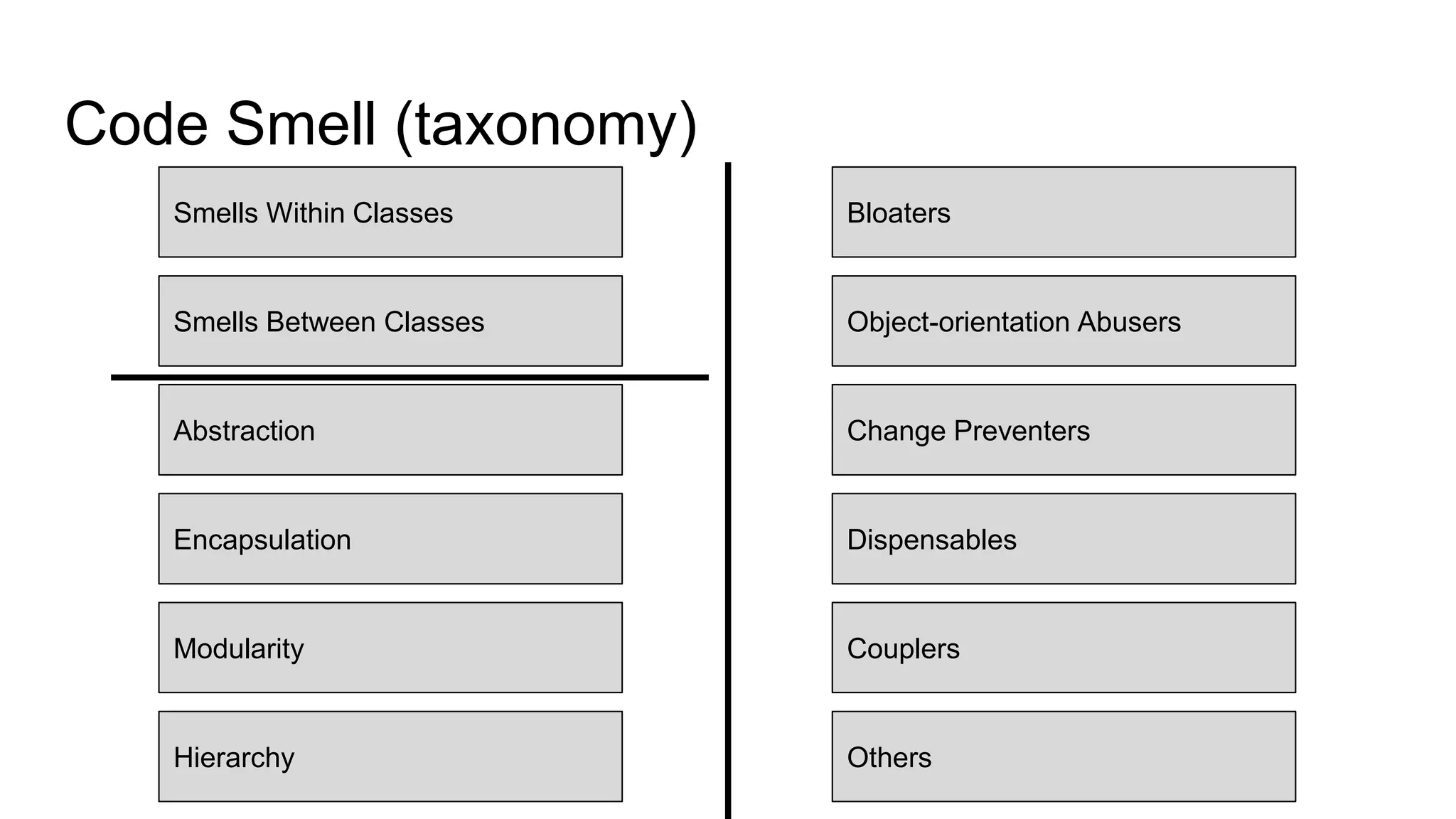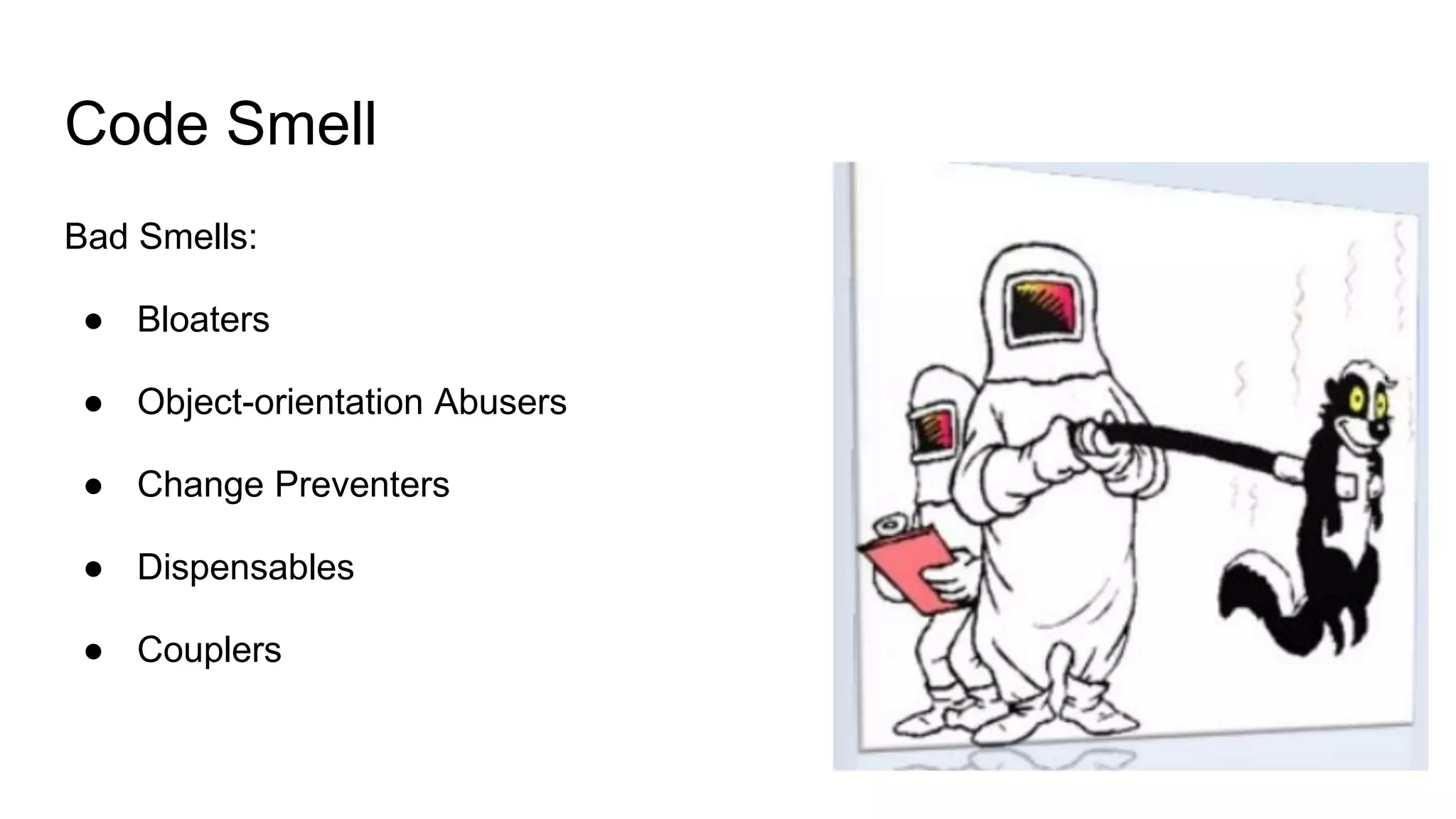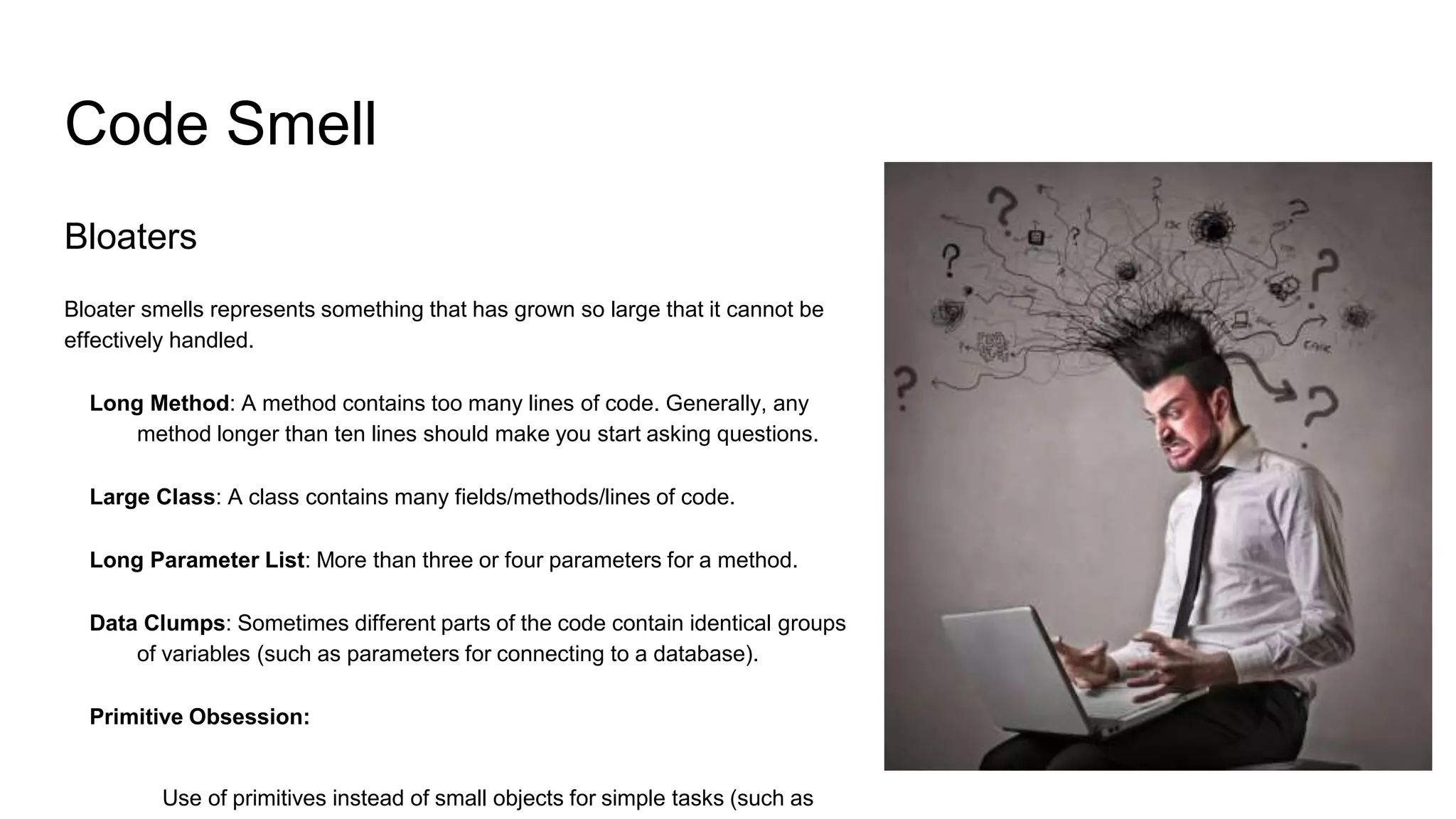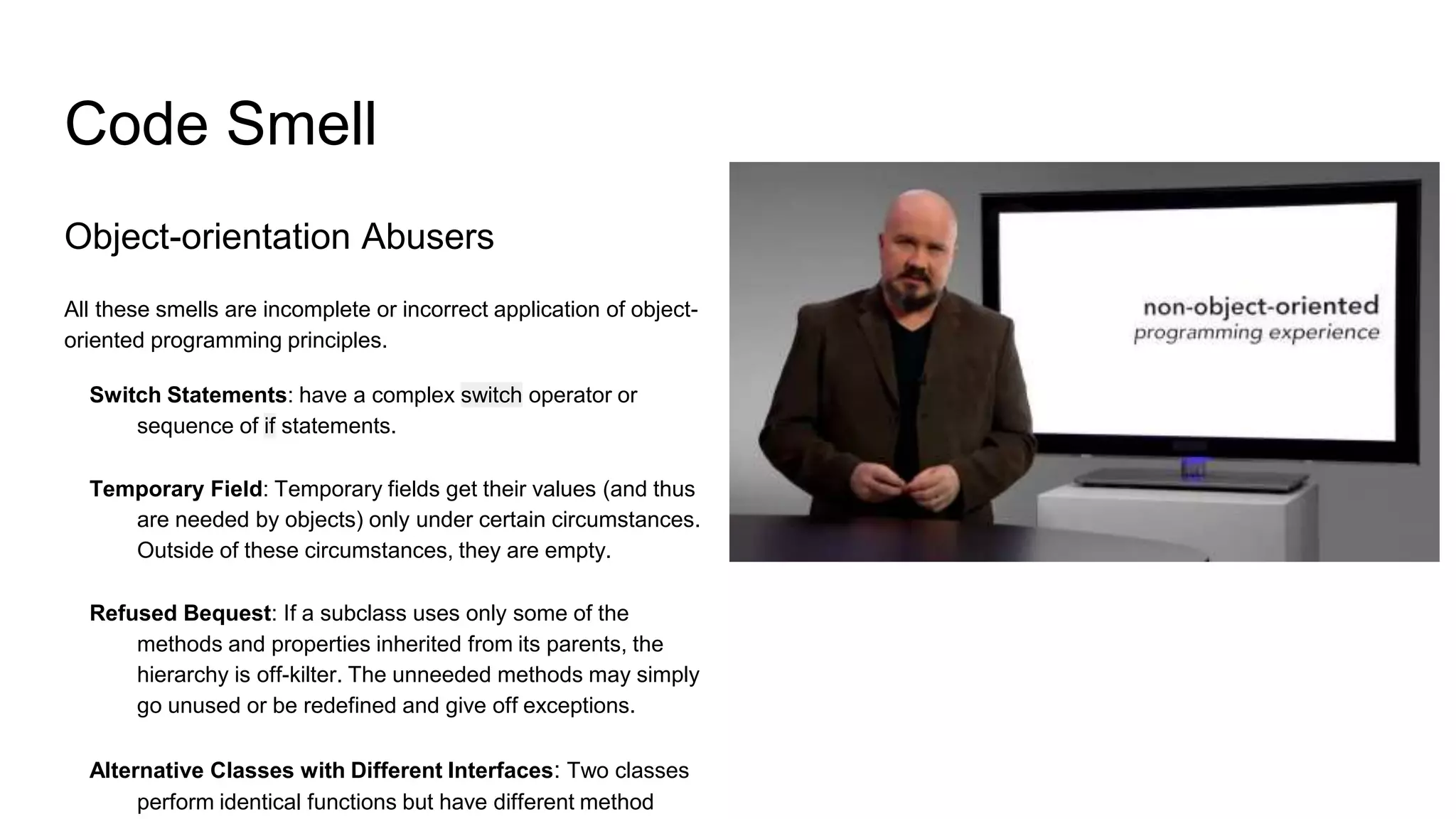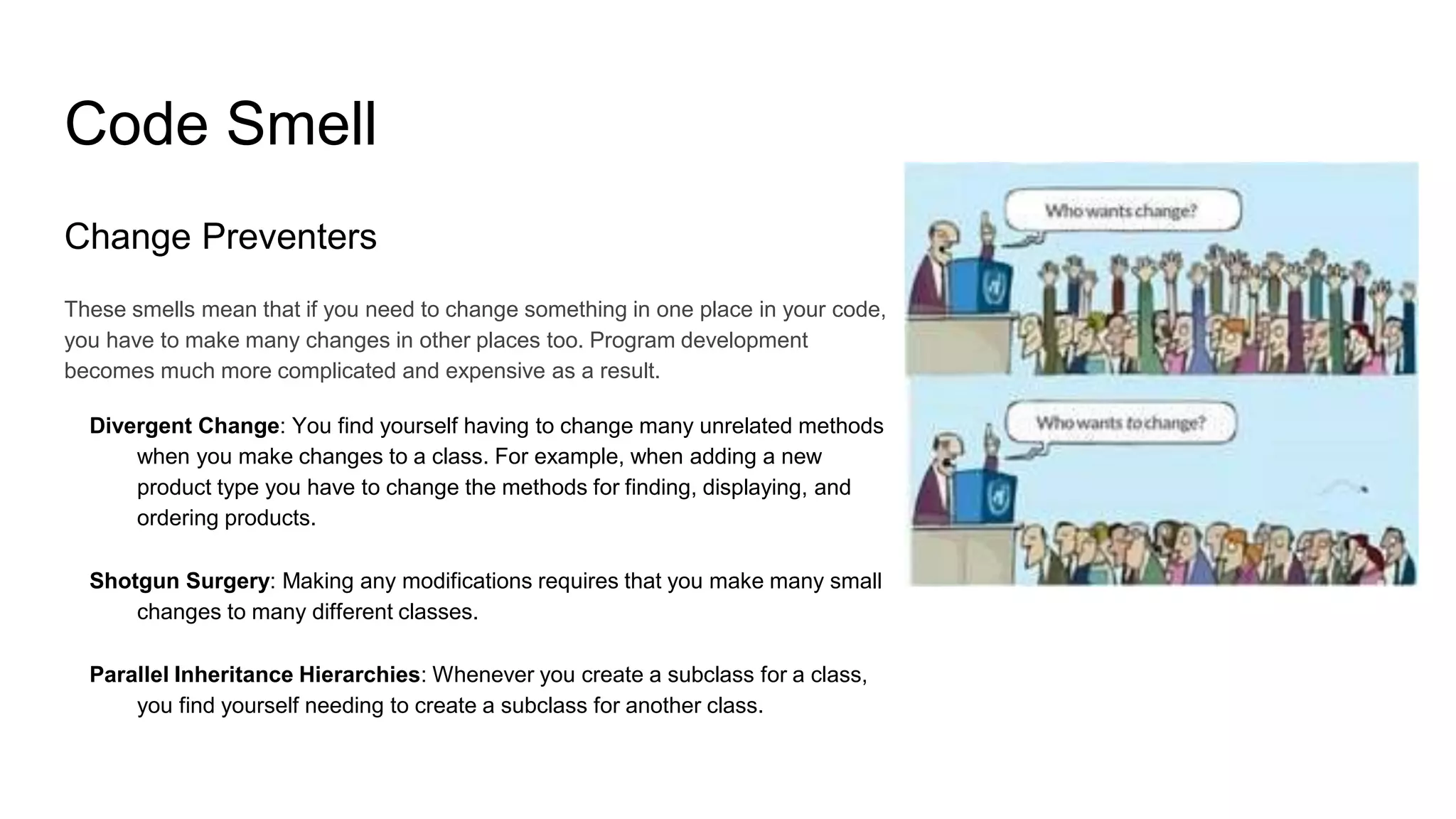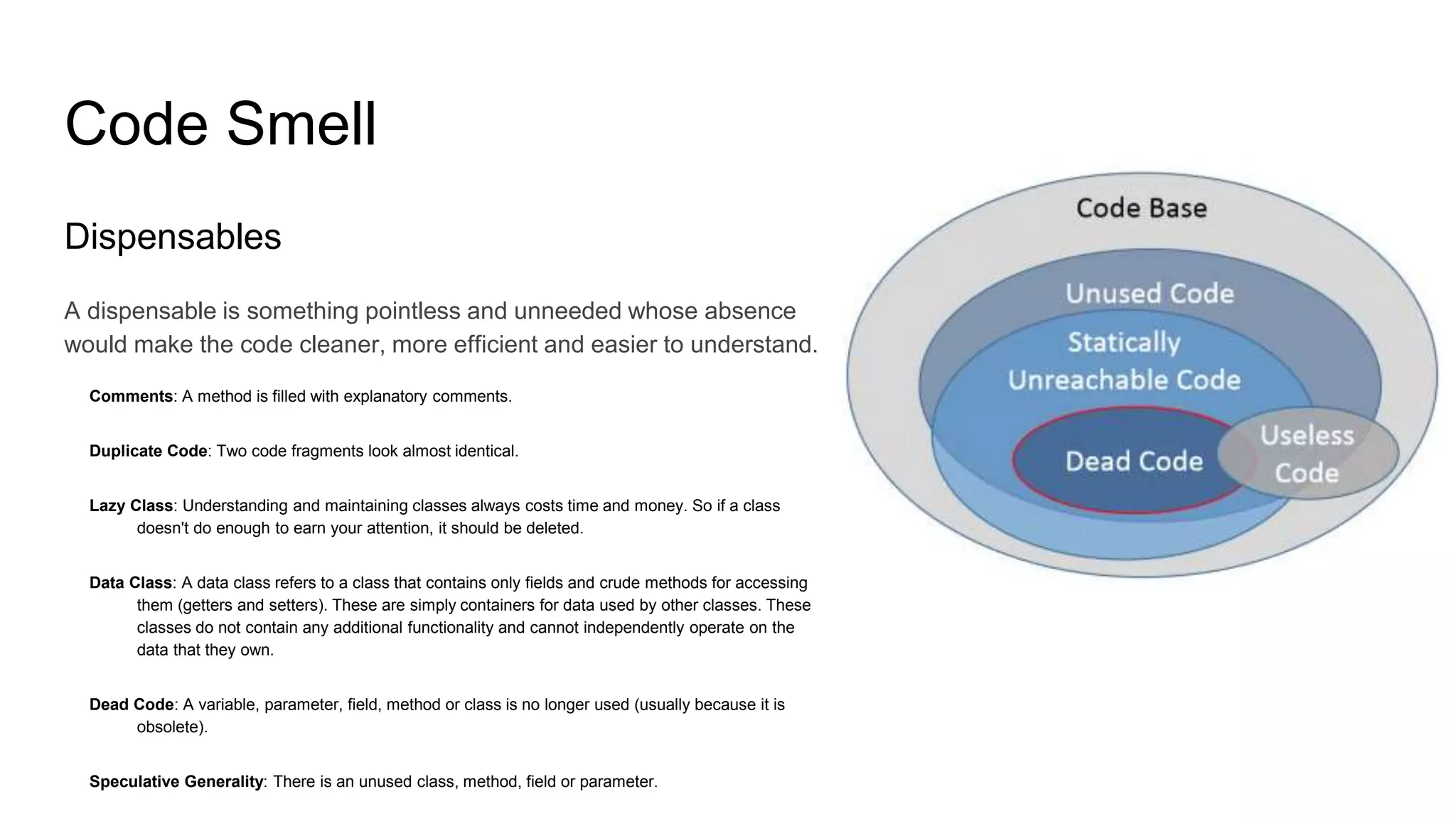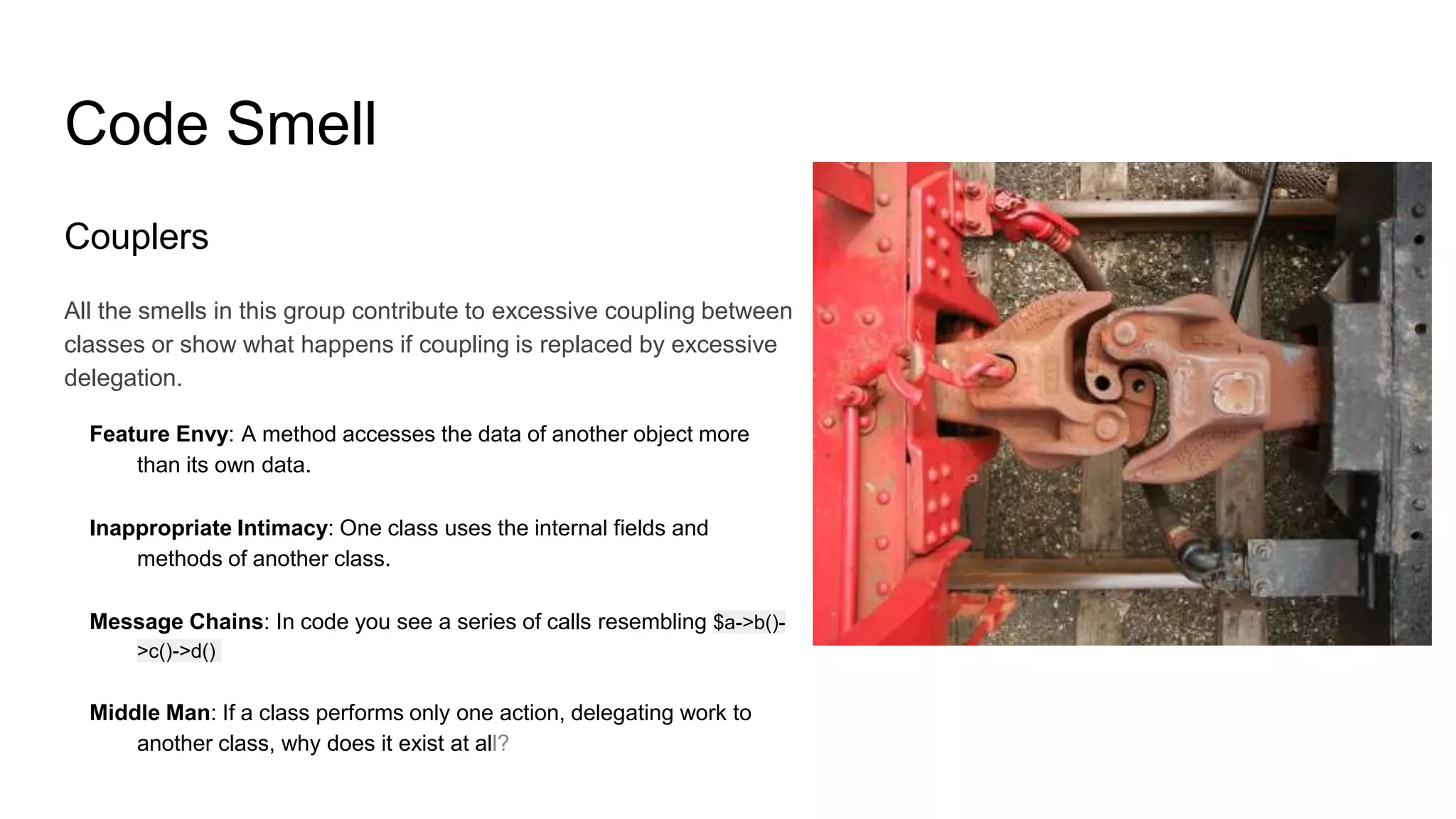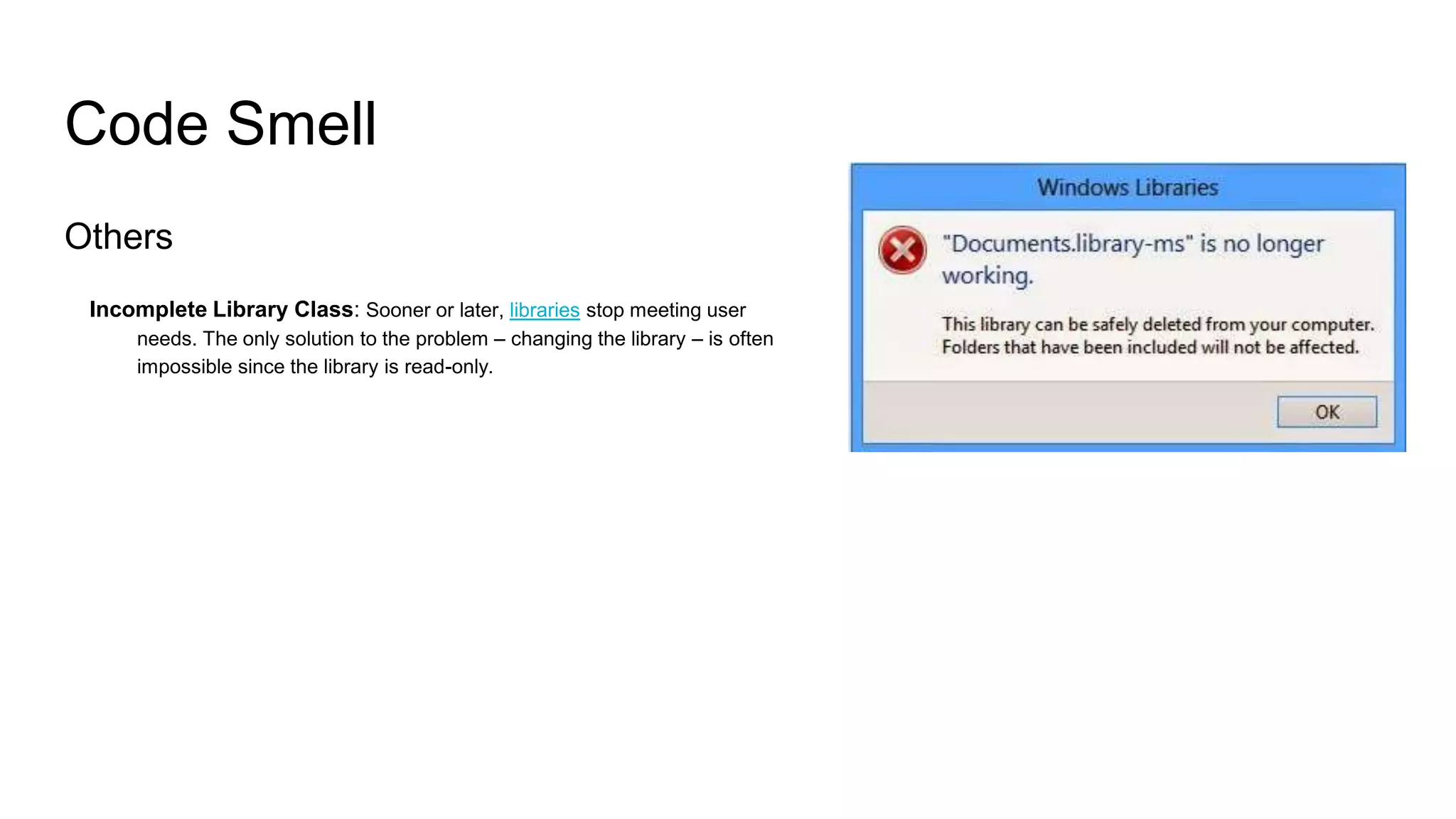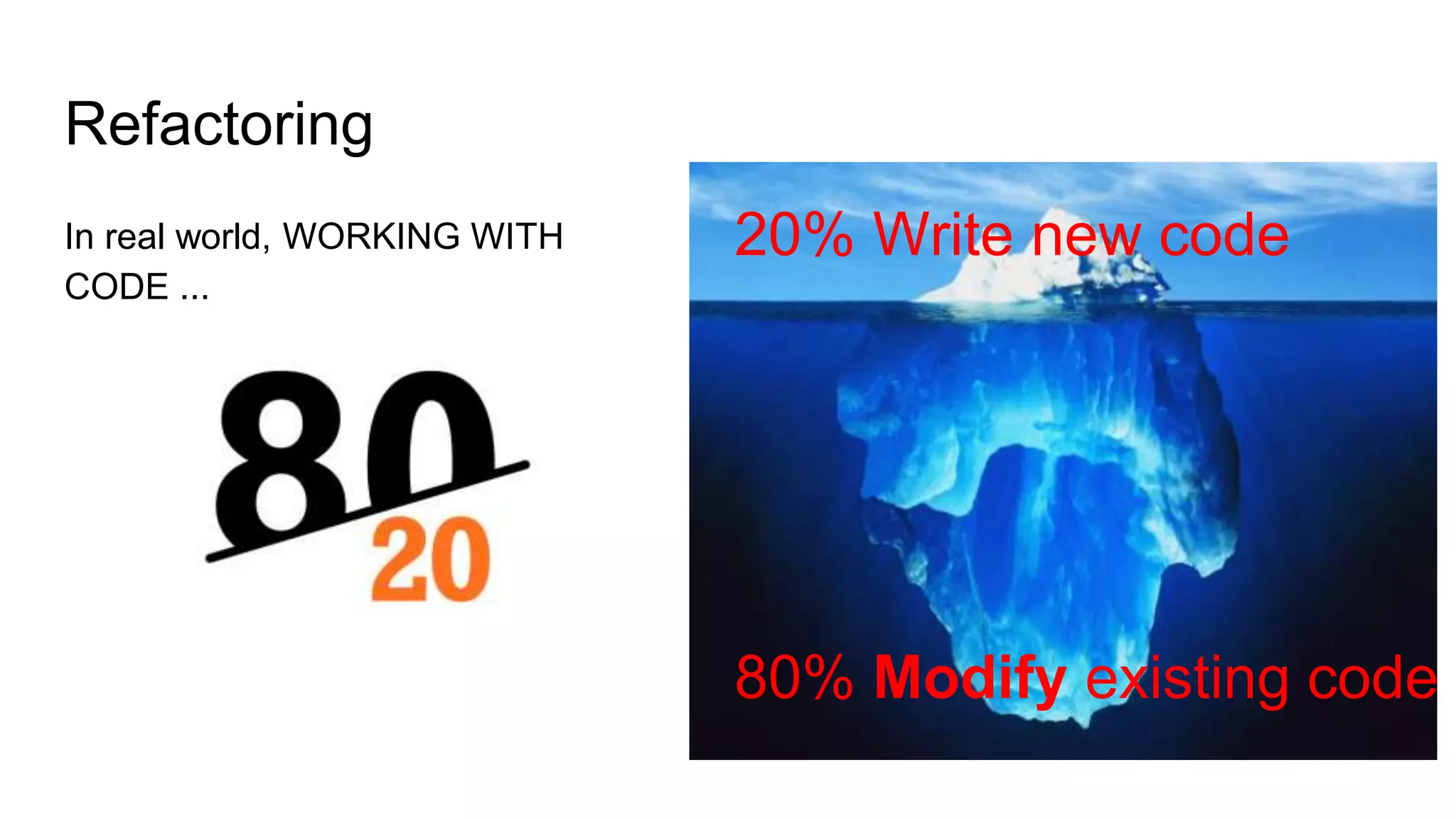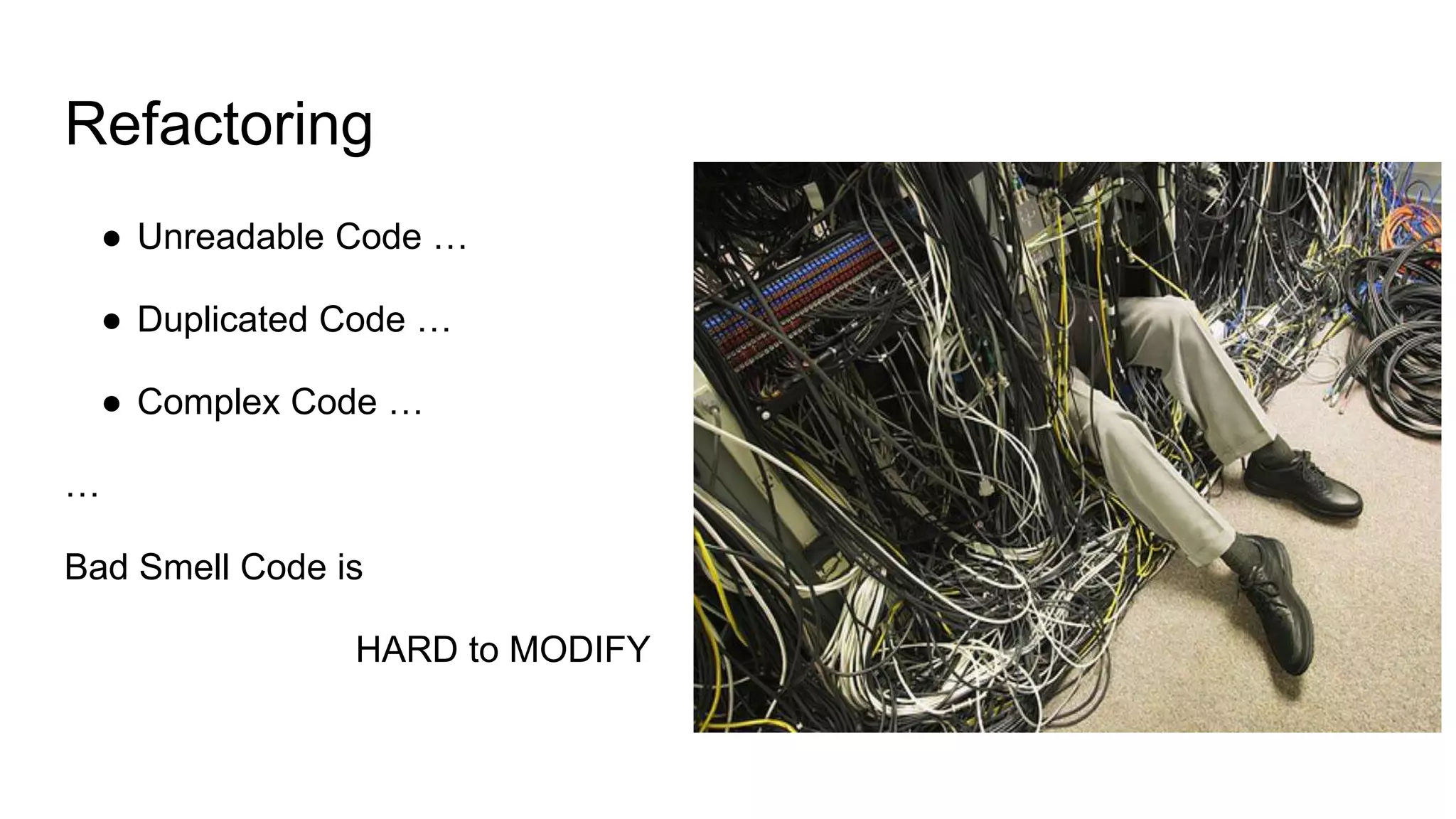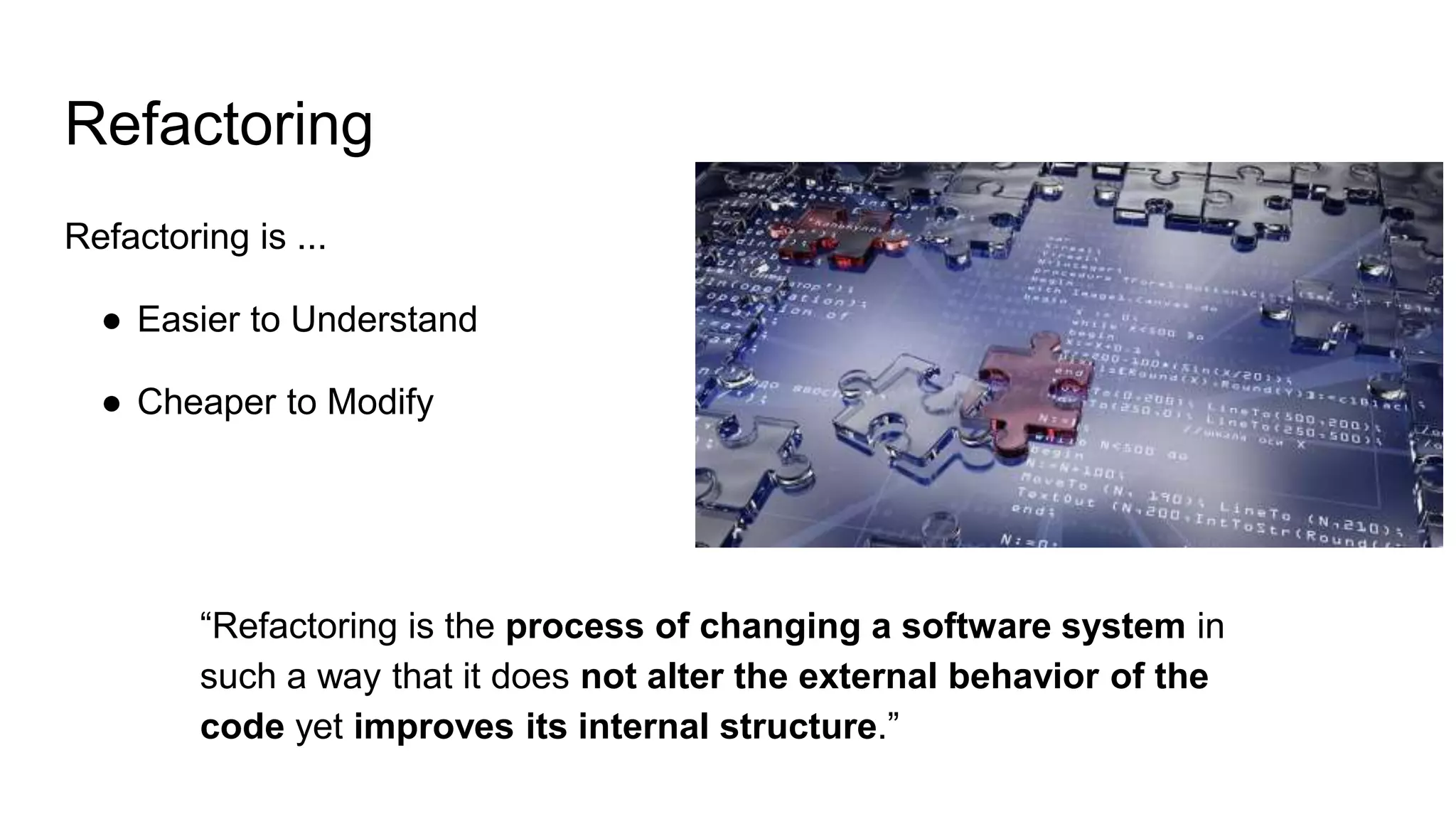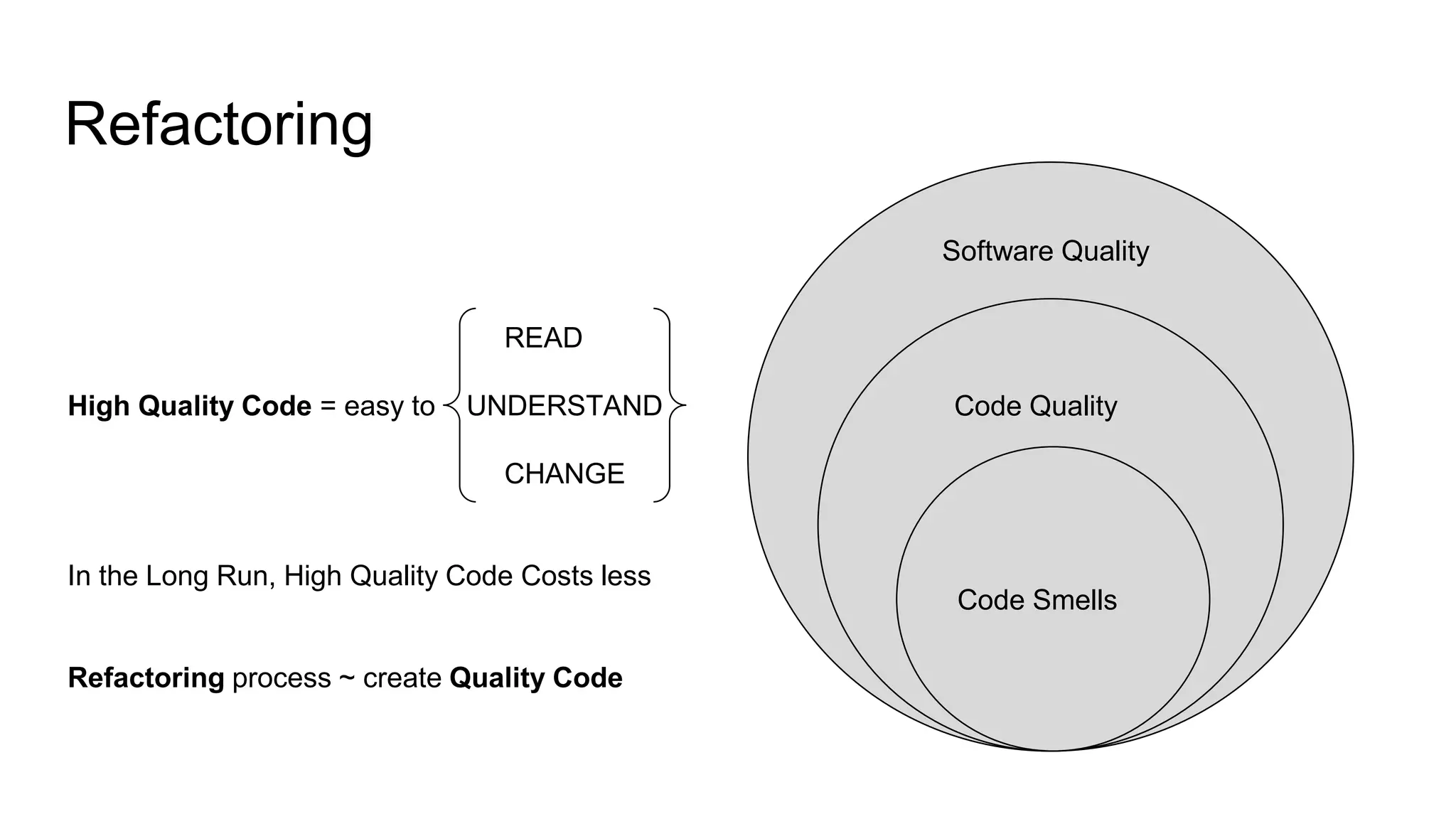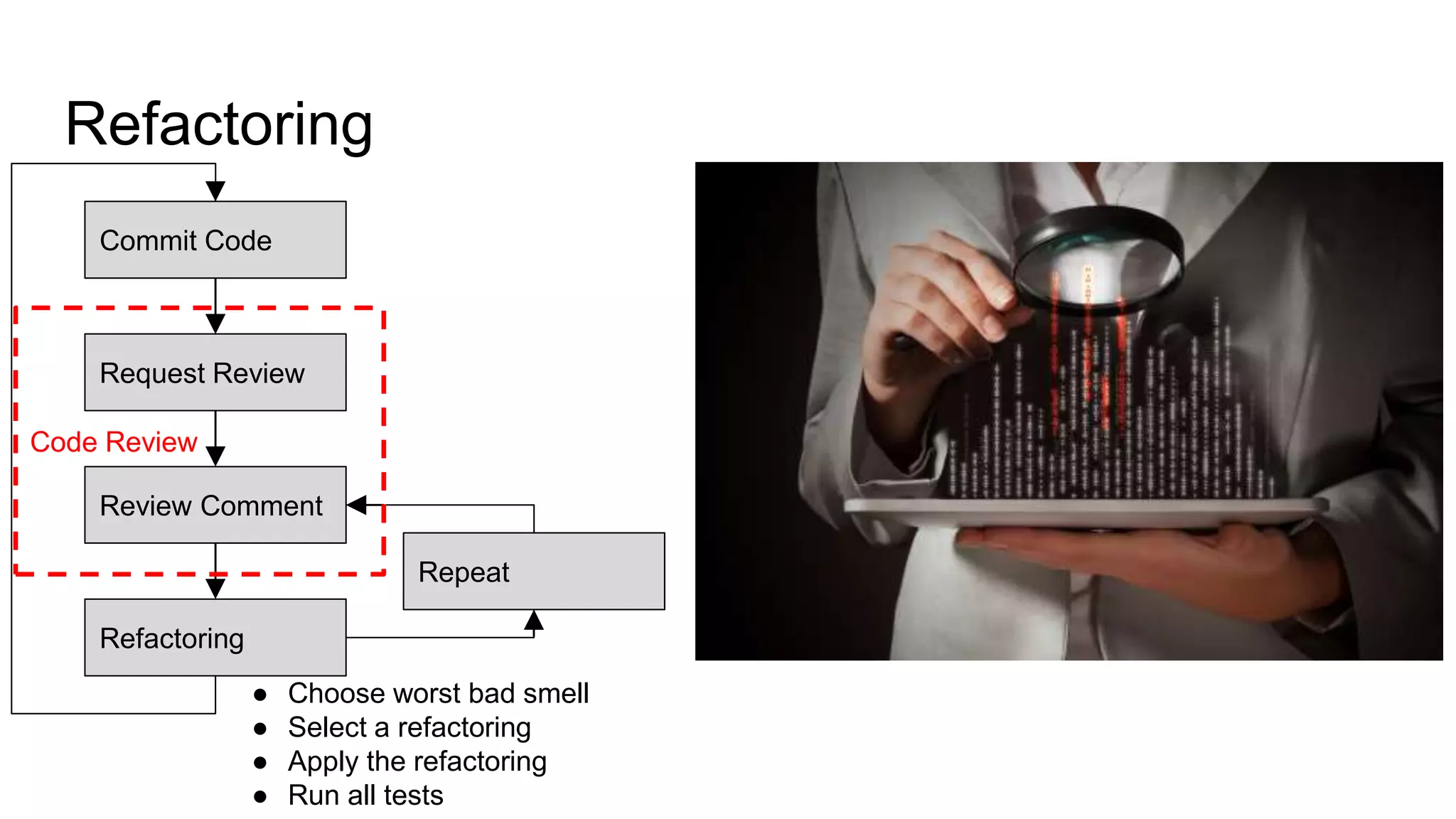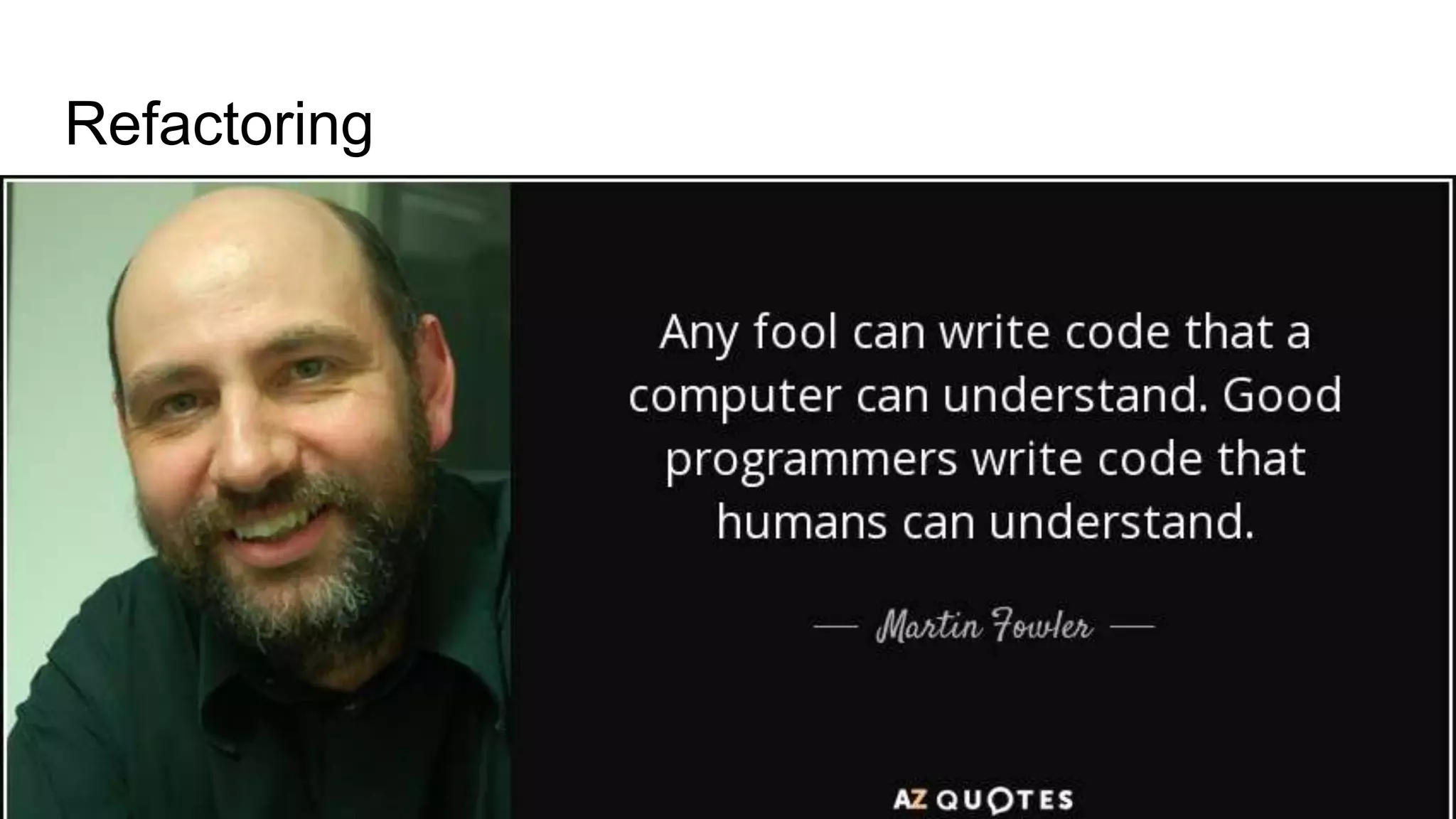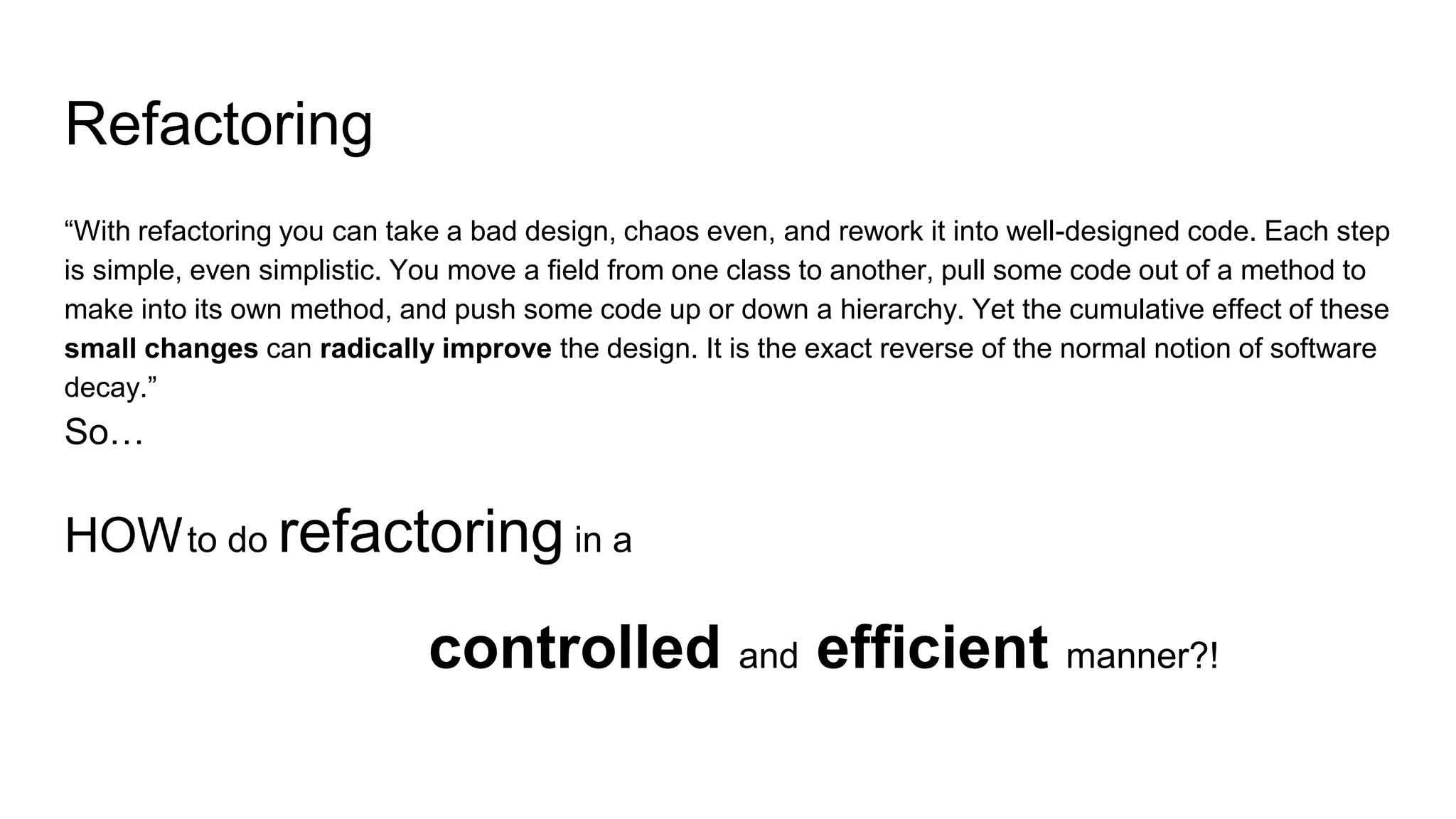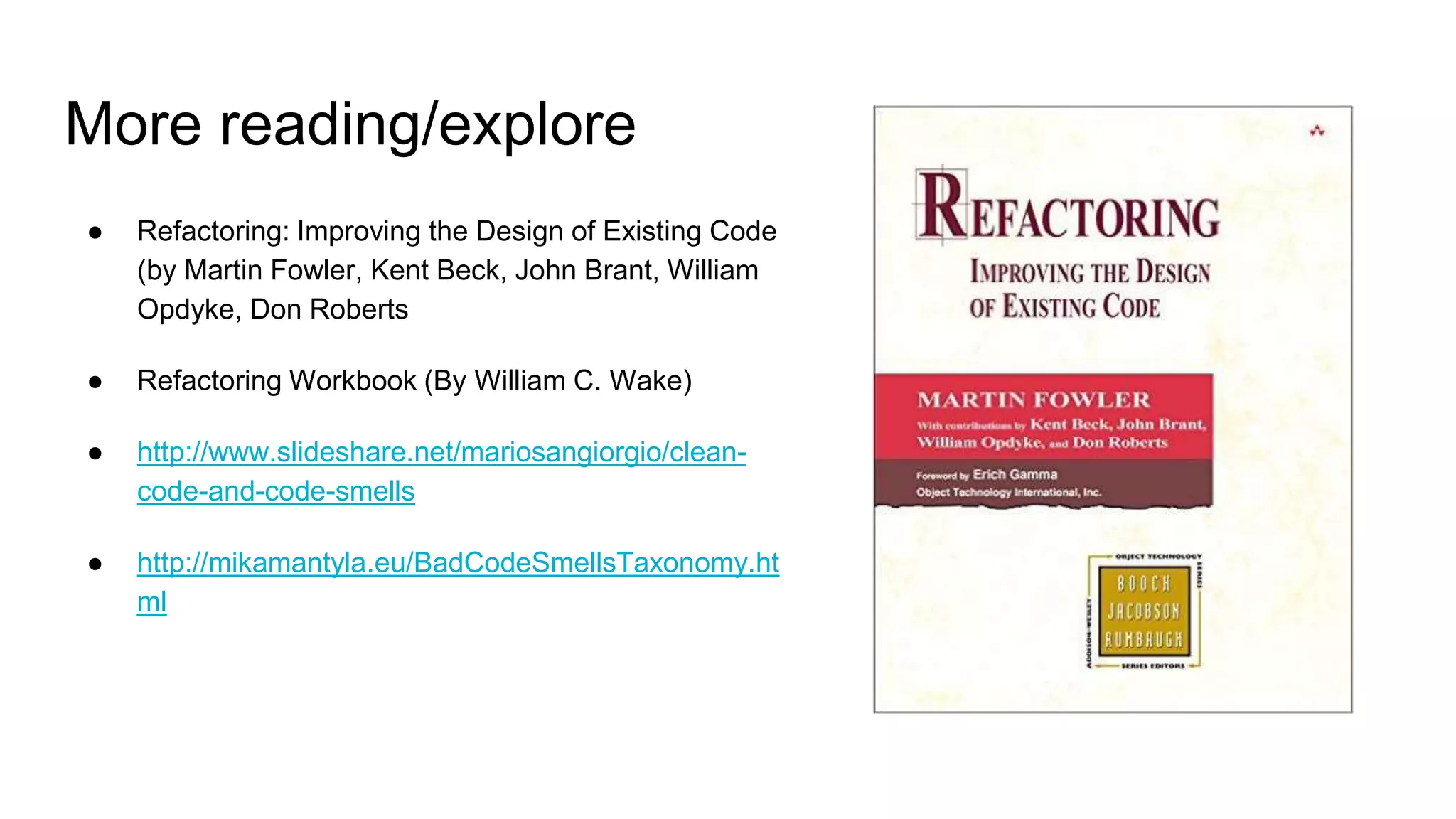This document discusses code smells and refactoring. It begins by defining a code smell as a surface indication of deeper problems in code, such as weaknesses in design that could slow development or increase bugs. Various types of code smells are described, including bloaters (e.g. long methods), object-orientation abusers, change preventers, dispensables, and couplers. Refactoring is introduced as a process of changing code structure without altering external behavior to improve code quality and make it easier to understand and modify. The importance of refactoring to address code smells and keep code maintainable over time is emphasized.
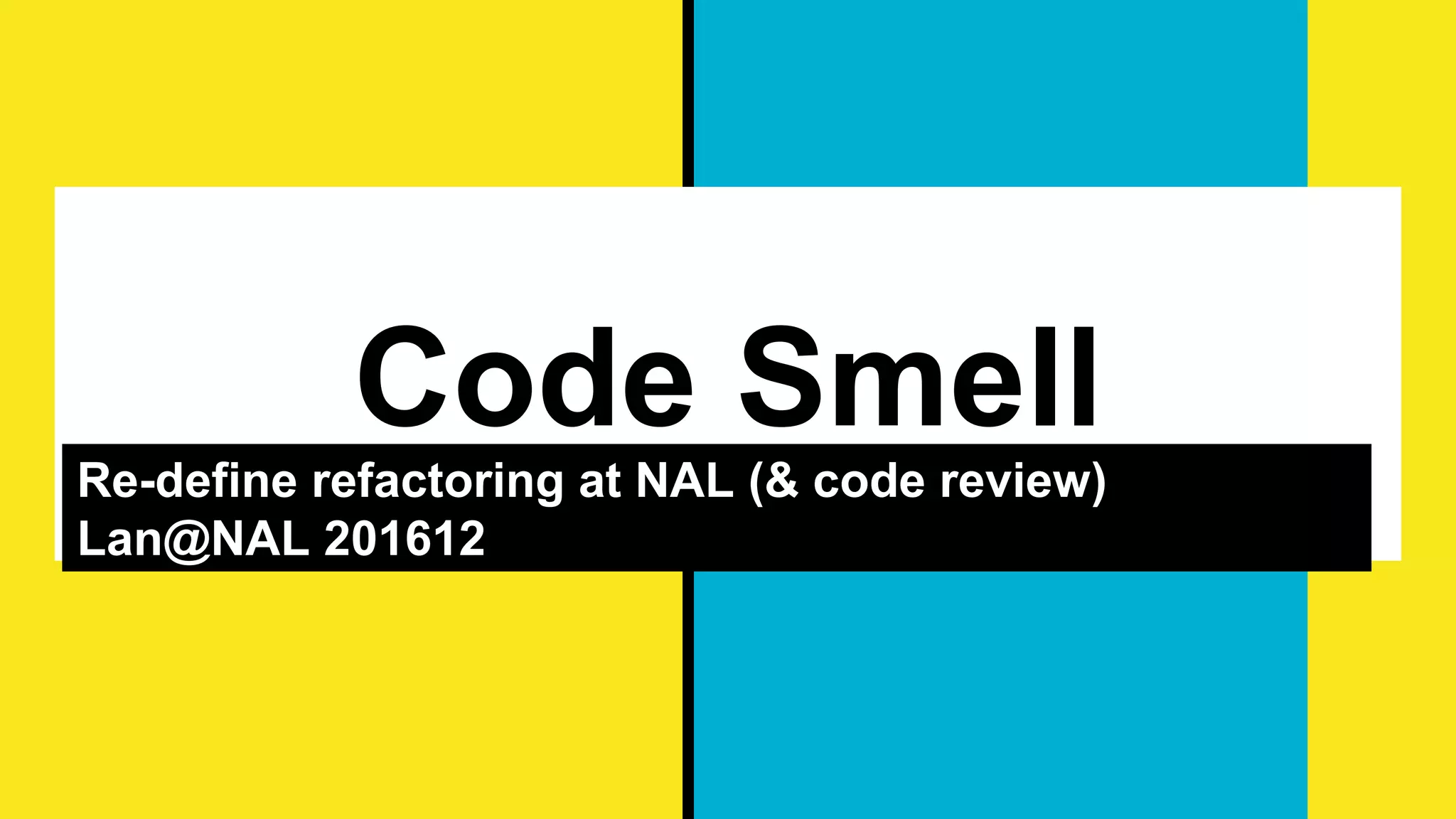
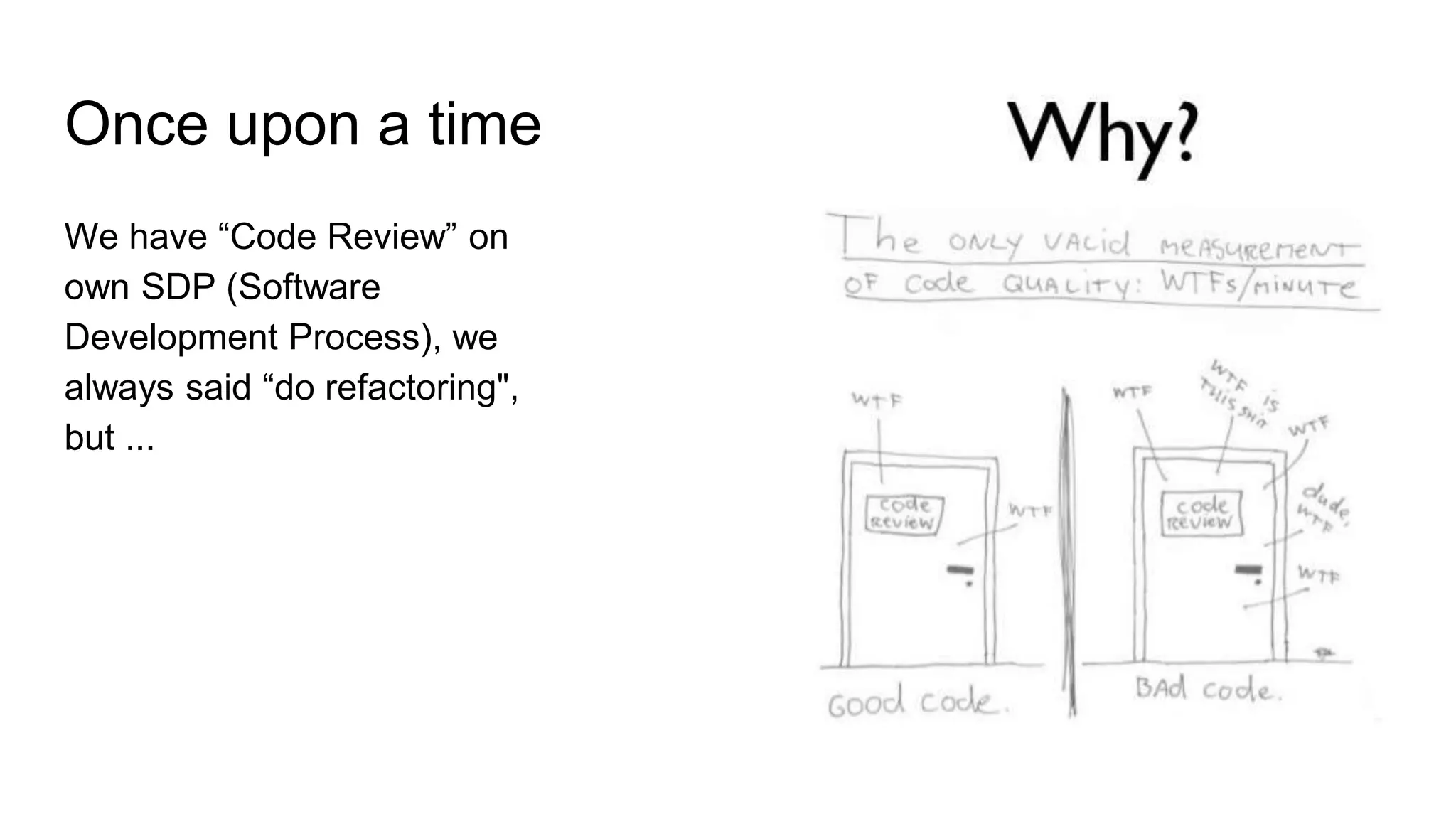


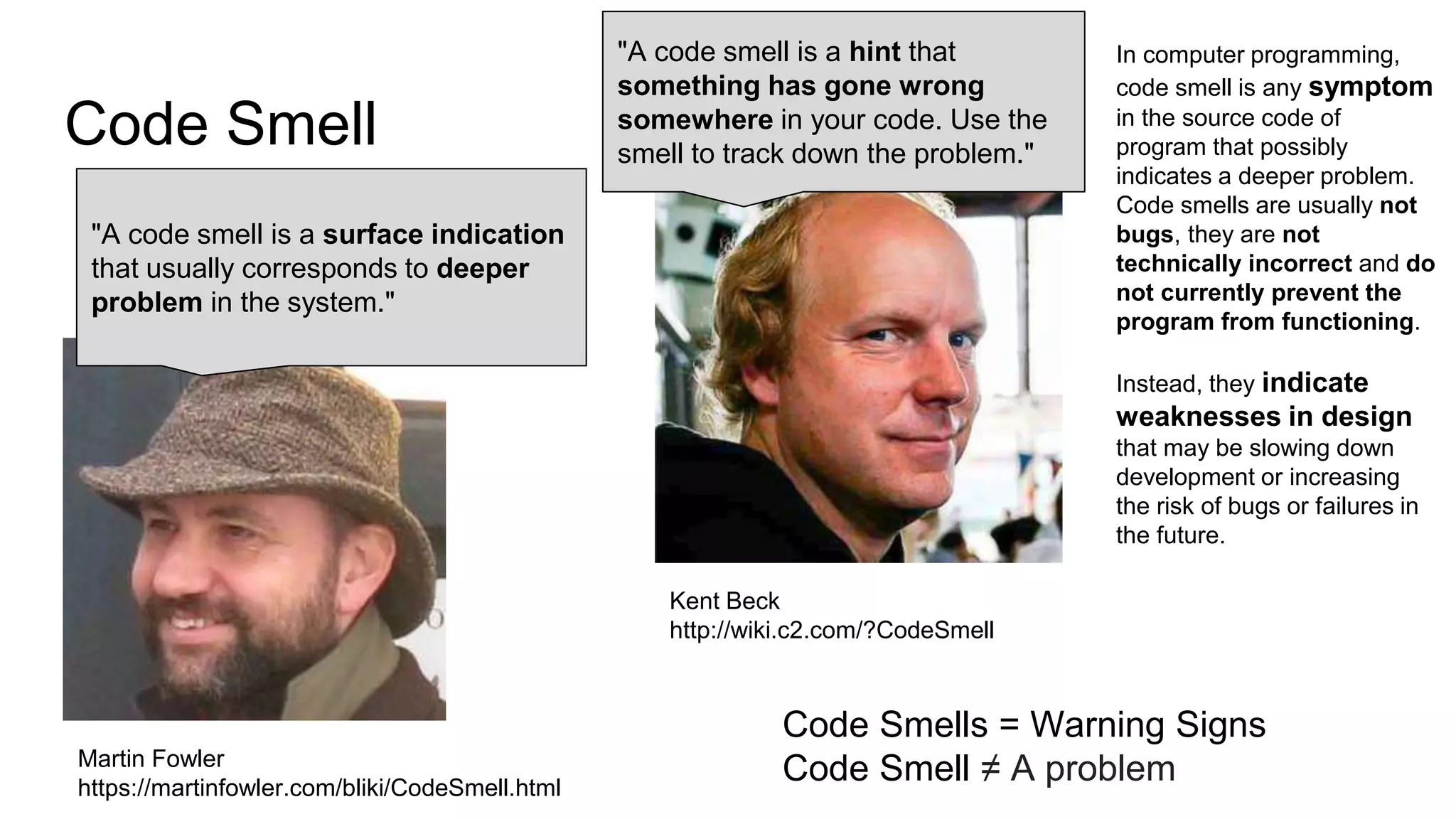
![Code Smell
“Bad code smells are symptons of poor design or
implementation choices”
[Martin Fowler]
● Pragmatic: code smells should be considered on a case by case basis
● Purist: all code smells should be avoided, no exceptions](https://image.slidesharecdn.com/codesmelloverview-161221090645/75/Code-smell-overview-6-2048.jpg)
